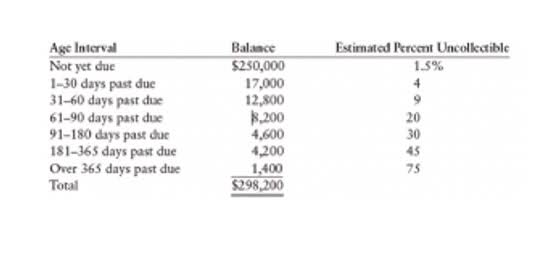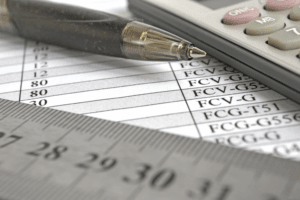How to Calculate Accurate Salvage Car Prices AutoBidMaster

The carrying value of the asset is then reduced by depreciation each year during the useful life assumption. The salvage value is considered the resale price of an asset at the end of its useful life. TAG Samurai leverages the latest technology to keep your business competitive. The software’s robust security features protect your data, while its cloud-based platform ensures accessibility from anywhere. Whether you’re in the office or on the go, TAG Samurai provides you with the flexibility to manage your inventory efficiently.
Straight Line Depreciation Calculator
- In general, the salvage value is important because it will be the carrying value of the asset on a company’s books after depreciation has been fully expensed.
- For example, you might get estimates from local salvage yards to confirm the vehicle is worth more than the insurer’s estimate.
- If your vehicle is totaled, the insurance company will assess its salvage value.
- It’s the estimated value of something, like a machine or a vehicle, when it’s all worn out and ready to be sold.
- The choice of method depends on the nature of the asset and its expected pattern of use and obsolescence.
- Salvage value is defined as the book value of the asset once the depreciation has been completely expensed.
The carrying value of an asset as it is being depreciated is its retained earnings historical cost minus accumulated depreciation to date. Salvage value is also called scrap value and gives us the annual depreciation expense of a specific asset. It must be noted that the cost of the asset is recorded on the company’s balance sheet whereas the depreciation amount is recorded in the income statement. If an asset is sold for more than its adjusted tax basis, the excess is subject to capital gains tax. Conversely, if the sale price is lower than the adjusted tax basis, the difference may be deductible as an ordinary loss, depending on the asset’s classification.
After-Tax Salvage Value Formula
Proper maintenance and regular upkeep can help preserve an asset’s condition and functionality, increasing its salvage value. On the other hand, neglected or poorly maintained assets may have a reduced salvage value due to their diminished condition. Salvage value and depreciation are both accounting concepts that are related to the value of an asset over its useful life. Scrap value might be when a company breaks something down into its basic parts, like taking apart an old company car to sell the metal. Below is a break down of subject weightings in the FMVA® financial analyst program.
Leverage Technology and Data Analytics
In conclusion, salvage value is a critical concept in asset management that represents the estimated value of an asset at the end of its useful life. Understanding how to calculate and apply salvage value is essential for accurate depreciation calculations, informed asset replacement decisions, and reliable financial reporting. Understanding salvage value is essential for businesses as it influences asset depreciation, impacting financial statements and tax obligations. This concept helps companies plan for the end of an asset’s useful life by estimating its residual worth, aiding in asset management and disposal decisions. Salvage value refers to the estimated residual value of an asset at the end of its useful life.

Salvage value, also known as residual value or scrap value, represents the estimated worth of an asset at the end of its useful life. It’s the amount you could expect to receive if you were to sell the asset after accounting for depreciation. Accurate assessment of salvage value impacts financial statements, tax calculations, and overall business strategy. Let’s consider an example of a manufacturing company that owns a piece of machinery. After analyzing historical data, market research, and assessing the asset’s condition, they estimate the salvage value of the machinery to be $10,000. This estimation takes into account factors such as technological advancements, market demand, and the asset’s current state.
- The salvage value of an asset like cars and computers refers to the final selling price of the asset after many years.
- In order words, the salvage value is the remaining value of a fixed asset at the end of its useful life.
- But if you think the insurance company’s offer is too low, you’ll need to provide evidence as to why the vehicle is worth more than what the insurance company is offering.
- Simply put, when we deduct the depreciation of the machinery from its original cost, we get the salvage value.
- The salvage or the residual value is the book value of an asset after all the depreciation has been fully expired.
By understanding different calculation methods, you can ensure accurate estimations and make better-informed decisions regarding your assets’ worth over time. From an accounting perspective, it affects companies’ depreciation and amortization expenses. In this way, it influences capital budgeting decisions by helping determine the total cost of ownership and whether to buy versus lease. For leased assets, the residual value then helps figure out the terms of leases.
Salvage value or Scrap Value is the estimated value of an asset after its useful life is over and, therefore, cannot be used for its original purpose. For example, if the machinery of a company has a life of 5 years and at the end of 5 years, its value is only $5000, then $5000 is the salvage value. There are six years remaining in the car’s total useful life, thus the estimated price of the car should be around $60,000. The majority of companies assume the residual value of an asset at the end of its useful life is zero, which maximizes the depreciation expense (and tax benefits). Eventually, it reaches a point where it’s no longer practical to keep repairing it. The amount you receive from selling the car or its parts is the salvage value.

It represents the amount that the asset is expected to be worth when it is no longer useful or productive to the business. This value is determined by various factors such as the condition of the asset, market demand, and technological advancements. The salvage value is important for accounting purposes as it allows for the calculation of depreciation expense. In conclusion, knowing how to calculate an asset’s salvage value is a vital aspect of financial Sales Forecasting planning and accounting.

What is the salvage value of a vehicle?
He loves spending time with his cats, along with playing every new PC action game as soon as possible. Let’s dive into some examples to make the salvage value concept of salvage value more concrete. If the company has to pay 35% taxes on the gain, they actually received $9,750 from the sale. You can stop depreciating an asset once you’ve fully recovered its cost or when you retire it from service, whichever happens first.
